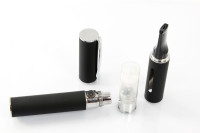Electronic Cigarette Product Liability Insurance

Providing the most competitive rates with the most comprehensive coverages available for e-cigarette importers, distributors and manufacturers
E-Cig Product Liability Quote Request »
Coverage highlights
- Low Minimum Premiums for Start-ups and Retail Shops Available
- General Liability Limits of $250,000, $500,000 and $1,000,000 available
- Excess Liability Limits Up To $4,000,000
- Claims Made Coverage Form
- Access To Leading “A” Rated Insurance Carriers
- Elimination of Dangerous Exclusions
Risk management advice for e-cigarettes manufacturers
The first thing that should be addressed is the quality of the e-liquids in the marketplace and making sure the e-liquid manufacturers follow the good manufacturing processes provided by the American E-Liquid Manufacturing Standards Association (AEMSA). Future e-cigarette industry claims are likely to come from allegations of contaminants (things not listed on the label) in e-liquids and imported batteries exploding or catching on fire. Certified AEMSA manufacturers that adhere to standards are considered better risks and are specifically identified and listed on the AEMSA website. Regarding batteries, a good risk management strategy would be to only buy batteries from a U.S. supplier that has product liability insurance and is willing to name your business as Additional Insured on their policy.
E-cigarettes and the uncertain market
What impact does the uncertainty from health organizations and researchers regarding the benefits and risks of e-cigarettes have on insurance carriers?The simple answer is most insurance carriers that are comfortable covering ingestible pharmaceuticals and dietary supplements will not offer a product liability policy covering e-cigarettes.
What impact does the FDA’s regulating e-cigarettes as tobacco products have on insurance carriers? Those insurance carriers willing to provide product liability insurance for e-cigarettes are narrowing coverage with exclusions and endorsements.Some insurance carriers use absolute health hazard exclusions. This appears to be the broadest of exclusions because it excludes any and all health hazards associated with e-cigarettes. If contaminates somehow get into the e-liquids, there is no coverage for bodily injury claims. Other insurance carriers will use tobacco and carcinogen exclusions. These exclusions do not exclude coverage for bodily injury due to contamination.
Tobacco exclusions
Since the FDA now regulates and identifies e-cigarettes as tobacco products, a big concern is the tobacco exclusion. We recommend that such tobacco exclusions be amended to include language such as “Tobacco Product” does not include electronic cigarettes,, or any mechanical or electronic device that dispenses substances such as nicotine, flavoring agents or other chemicals that are marketed, advertised, sold for, intended for, used to simulate, mimic, substitute, or replace the consumption of any type of tobacco or substance containing nicotine. These exclusions typically do not exclude coverage for bodily injury due to contamination.
How e-cigarettes could save lives
There are lots of questions surrounding the use of e-cigarettes, but maybe we’re forgetting the most important one: If all tobacco users started using e-cigarettes instead of tobacco products, would they be better or worse off? Based on current data, millions of lives could be saved if tobacco users switch to e-cigarettes as a way of feeding their nicotine addiction.
Let’s explore what we currently know about e-cigarettes and the tobacco products they are meant to replace.
What we know about tobacco products:
- There are more than 7,000 chemicals in a typical cigarette, 80 of which are linked to cancer.
- Heavy tobacco users die an average of 13 years younger than non-tobacco users.
- One in five deaths in the U.S. is currently attributed to cigarettes.
- If current trends continue, the death toll attributed to tobacco products will reach 1 billion people in this century.
What we know about e-cigarettes:
- There are four typical ingredients found in e-liquids or e-cigarettes: liquid nicotine, propylene glycol, vegetable glycerin, and food flavoring.
- All the products in e-liquids or e-cigarettes, with the exception of liquid nicotine, are FDA-approved food-grade ingredients.
What we know about nicotine
- It is the highly addictive chemical found in tobacco.
- It is a stimulant, much like caffeine.
- There is no evidence that nicotine is a carcinogen. In fact, in one long term study, mice were given twice the nicotine dosage of a heavy smoker for 20 hours a day, 5 days a week for a two-year period. The findings revealed no increase in the mortality rate, frequency of tumors, atherosclerosis or in neuroendocrine cells.
Regulation
Currently, the FDA’s position is clear on the issue of regulation. As long as e-cigarettes are not marketed as medical devices or for therapeutic purposes the FDA will regulate them as a tobacco product. If marketed as a device to help stop smoking, the FDA states e-cigarettes must be regulated as drugs or medical devices, similar to nicotine patches and gums, and must pass through the same regulatory processes as nicotine patches and gums currently on the market. Per FDA regulations, it is clear e-cigarette manufacturers and distributors should not be marketing their products as a way to stop smoking. A better marketing approach, such as a healthier alternative to smoking, could be used.

